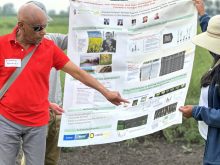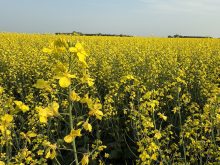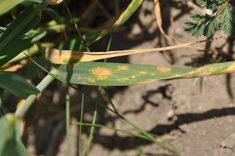Race identification offers canola growers a precision-level guide to the exact resistance that they need, but will it work?
By now many canola producers have heard about race-testing blackleg samples.
It’s a precision testing practice that recommends the canola variety needed to fend off different “races” of blackleg, the fungal crop disease costing Canadian canola producers hundreds of millions of dollars a year.
One might look at it as another tool to integrate into other blackleg management actions such as crop rotations, seed treatments and choosing resistant canola by variety. However, if you ask the Prairie Crop Disease Monitoring Network, they’ll say those practices alone may not be enough in the face of advanced blackleg virulence.
Read Also
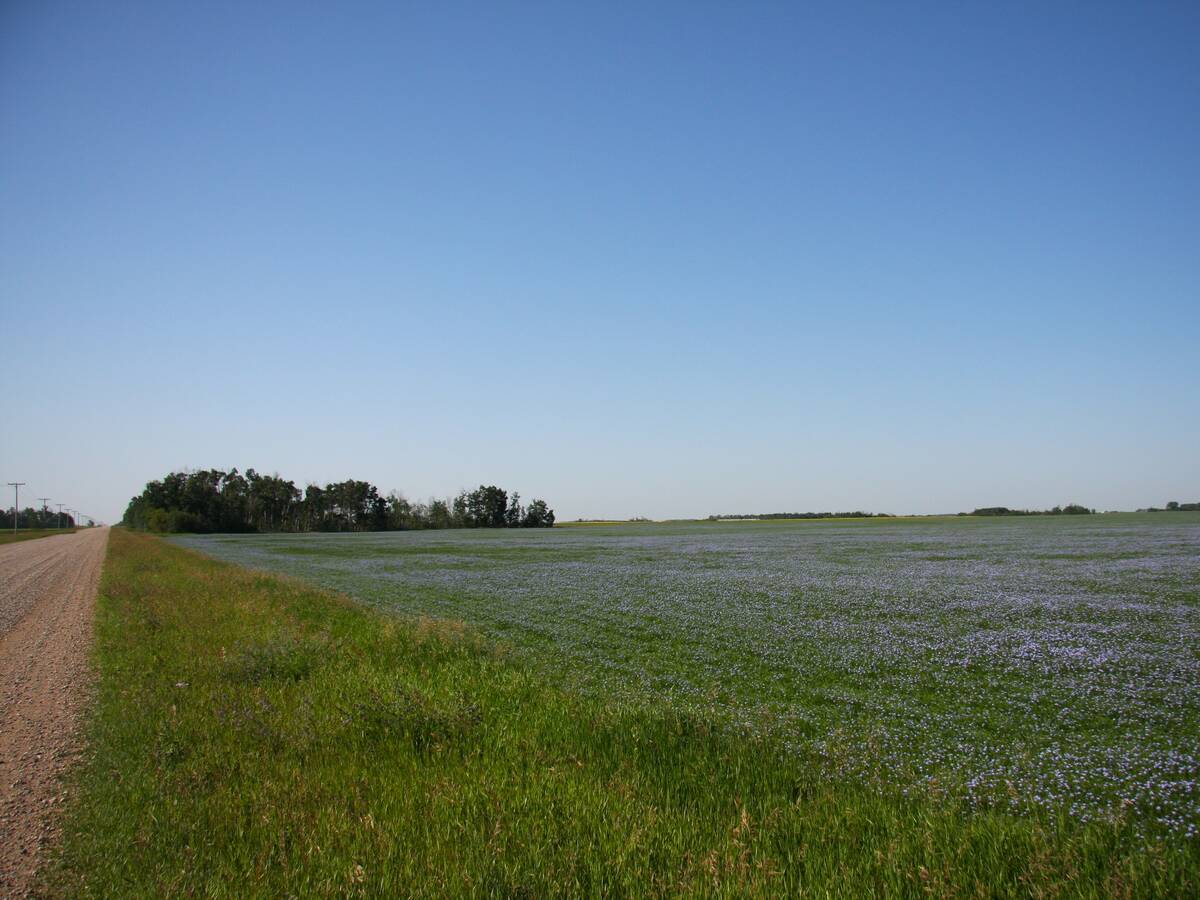
Farmland advisory committee created in Saskatchewan
The Saskatchewan government has created the Farm Land Ownership Advisory Committee to address farmer concerns and gain feedback about the issues.
“Over the past 10 to 20 years there have been concerns regarding observed shifts in blackleg pathogen virulence in response to the major gene resistance used in a number of varieties,” the organization said on its website.
“Changes in virulence patterns emphasize the critical need to stay on top of this disease.”
Some of the regular variety selection tools farmers depend on can fall short of the advanced precision required in a world with increasing — and more virulent — blackleg.
For example, the Susceptible (S) through Resistant (R) ratings assigned to varieties in the registration process are based on a canola plant’s average resistance among its major resistance genes or average susceptibility to a pathogen.
“We have seen every year, really, where there are varieties that are rated R that have done really poorly. They look completely susceptible in the field,” said Clint Jurke, who at the time of interview was an agronomy specialist with the Canola Council of Canada.

“So yes, there are cases where if the grower is growing the wrong variety for that type of race in the fields, then they could have a pretty bad time with blackleg.”
So how exactly does race apply to blackleg?
“There’s the pathogen, which is usually a population, and you’re going to have proportions of that population that the plant can recognize and portions that it can’t recognize,” said Jurke.
“And that’s what we call different races. There might be one race that the major gene works against but another race that’s in the field, it doesn’t work against.”
There are two types of resistance to blackleg in canola: major gene resistance and quantitative (or minor) gene resistance. Some seed companies include major gene resistance data on the seed bag. A method of listing minor resistance genes is still a work in progress.
How are blackleg races identified?
The first step is to take a sample of an infected canola stem, either from the current canola crop or from old canola residue from a couple of years ago, said Jurke.
The second is to have a lab identify any avirulence genes present in the sample. Laboratories with the resources to conduct this test include Discovery Seeds in Saskatchewan, 20/20 Seeds in Alberta and Manitoba’s PSI Lab.
“An avirulence gene is simply some part of the Leptosphaeria maculans (blackleg) fungus that the resistance gene recognizes,” said Jurke in a canola council video called How to interpret race tests for blackleg resistance selection.
“When that resistance gene gets a positive match, the plant then initiates its defence mechanisms to kill that pathogen, so the resistance gene is kind of like a sensor and the avirulence gene is like the sensor’s target. You need to have both of those in order for the plant to detect and to kill the pathogen.”
The lab will send test results to the farmer, which lists the races present in the sample as well as the genotype and phenotype.
A genotype includes the genes present in the DNA while a phenotype is the expression of those genes, said Jurke. For race testing, the phenotype is most relevant.
“What the plant actually sees is the phenotype. The resistance genes will be recognizing this phenotype, and so that’s what we actually want to be paying attention to here.”
Jurke gave an example of a predicted phenotype with the avirulence genes (avrlm) 2, 4, 5, 6, 7 and 11.
“What that means is that we need to find a resistance gene that will detect one of these avirulence genes, and you only need one,” said Jurke.
To find that gene, you need to cross reference the avirulence genes with the canola variety’s resistance genes (rlm) listed on the variety label if the seed company has chosen to do so.
For example, Avrlm4 is detected by rlm4, which is in resistance group e1. That means you want a cultivar with resistance group e1, said Jurke.
“We will look through the literature and if we can find (a variety) that says e1 … then that is the best variety that will control that particular race for the field.
“So we can take comfort in knowing that if we purchase this variety the next time we put canola into this field, then we will actually have good control. It won’t be complete control because the sample that is submitted to the lab might not be completely representative of the entire variation in the field, but certainly we will know that this variety will control this race that was present in the sample.”
Keith Fournier, a canola, wheat and pea grower from Maidstone, Sask., race-sampled the blackleg in his fields last year and bought a resistant canola variety based on the results. He intends to plant it next year.
Fournier was at the end of his rope as blackleg continued to infect his canola despite the use of a resistant variety.
“It used to be that when we chose a variety, as long as it was R, we were good with it,” he said.
“But now, the last couple of years, we’ve been finding (blackleg). Even with choosing varieties that have an R resistance, blackleg is still coming back.”
The tests confirmed Fournier’s resistance group as “e2,” which requires a canola variety with e2 race resistance.
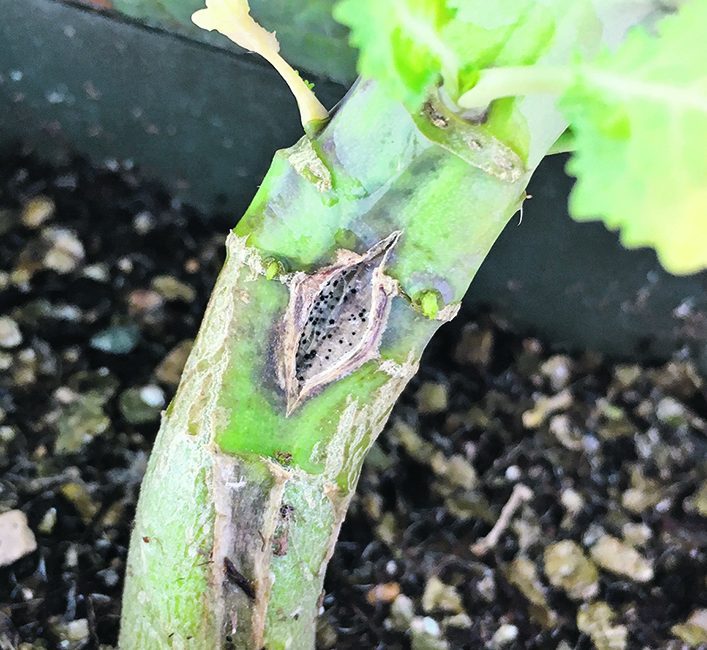
“And so that really limits the amount of varieties because there’s only a handful of varieties that have that race resistance to it,” he said.
One factor that makes race testing difficult, he added, is the reluctance of some seed companies to list a variety’s major resistance genes on its label.
One of these is BASF Canada.
Jared Veness, the company’s technical service manager, has cited inefficiency as a primary reason why BASF hasn’t acknowledged major resistance genes on its labels.
“Most fields that have blackleg issues have two, three or more races within the field,” he said.
“And even if you have the appropriate major gene matched up with the race that you’ve identified, you can still get disease from the other races that are present.”
It’s too early for Fournier to come to any conclusions, but he intends to do his due diligence after he plants his race-resistant canola for the first time.
“I will assess it again next year to see if my blackleg has been reduced. (I’ll) pull plants and cut them and have a look at them. And if I find that I’ve got blackleg, I’ll send it away for testing again.”




